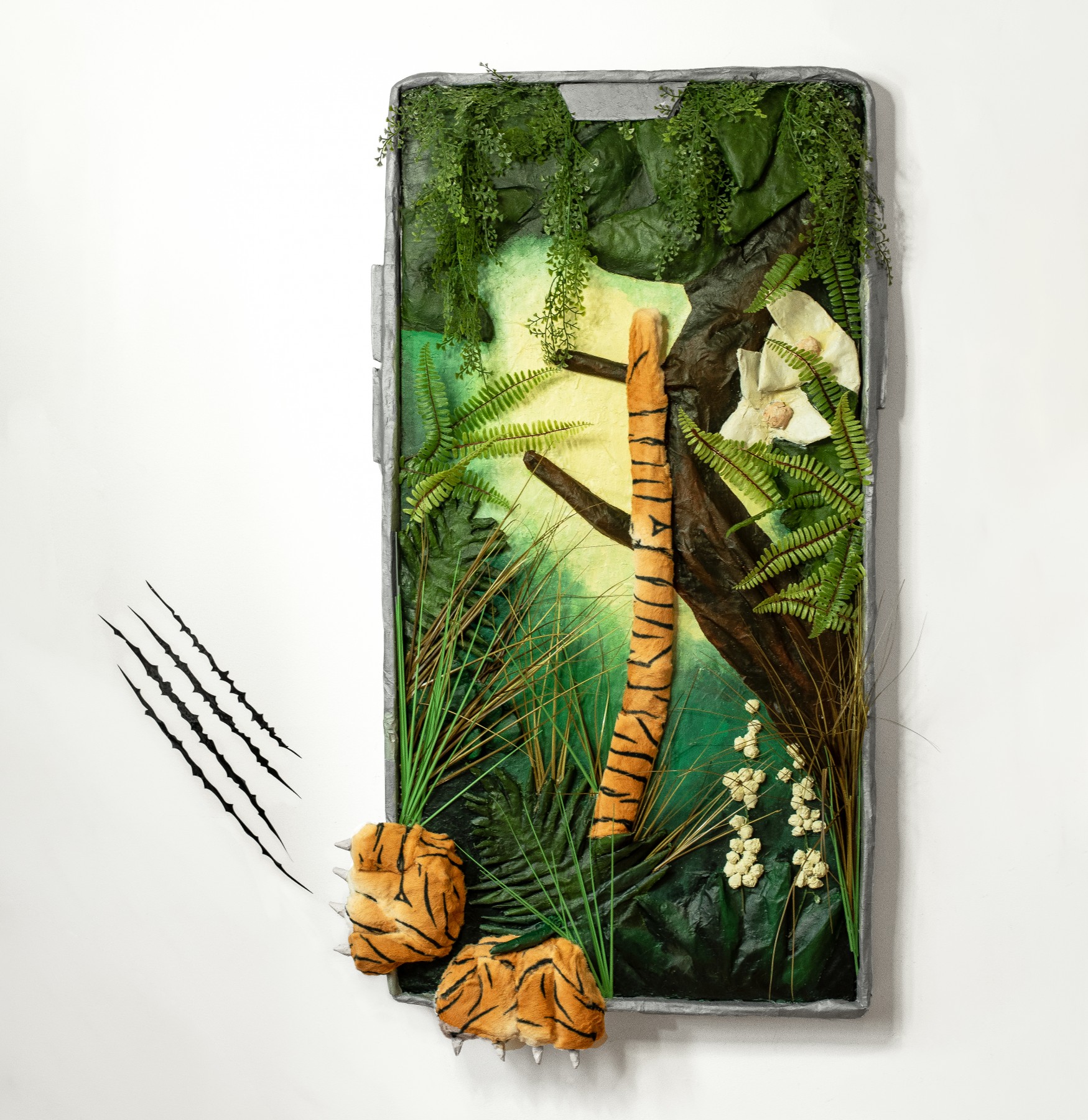
The demand for ‘once in a lifetime’ experiences and selfies are driving both animal cruelty and the global trade in wild animals. We've teamed up with Toronto-based visual artist Briony Douglas to raise awareness about the terrible harm caused by wildlife selfies, especially those taken with tigers.
Today, July 29, marks International Tiger Day and this year, we’re hoping the tiger selfie finally goes extinct.
Briony Douglas, whose colourful works frequently combine elements of surrealism and pop culture, wanted to send a message to travelers not to unwittingly support the suffering of tigers. She created a mixed-media piece showing a tiger trying to escape a selfie frame.

"At this moment in history, we have access to experiences that previous generations couldn’t have dreamed of, that we can capture at the click of a button,” said Briony. “These experiences have almost become routine, and we don’t even stop to question the morality of keeping wild animals caged for our amusement. Tigers should be free, not trapped in a tourist’s selfie frame and a lifetime of cruelty."
Watch Briony’s full behind-the-scenes process:
Tigers are bred for wildlife tourism and the traditional medicine industry. As the demand for “once in a lifetime” experiences grow, the “tiger selfie” is driving animal cruelty and the global trade in wild animals.
While tiger cubs remain with their mothers for two years in the wild, those bred in captivity are separated from their mothers within weeks of their birth so they can be used as photo props for tourist selfies. It’s a global problem. Here in Canada, tigers have been bred for use as photo props by roadside zoos and exotic pet owners. The situation is even worse in Thailand where tigers live in cruel conditions and are subject to abuse to keep them submissive enough to entertain tourists. Most live in small concrete cages or barren enclosures with limited access to fresh water.
“Tourists are unaware of the harm and neglect that goes on behind the scenes of each click of the camera,” said Melissa Matlow, Campaign Director for World Animal Protection, Canada. “It’s our demand to see these animals up close that is fueling the trade and captive breeding of tigers. While tourism has come to a halt due to COVID-19, we are asking the industry to build back better. The ‘tiger selfie’ should go extinct.”

You can see more of Briony’s piece, simply called Tiger, on display virtually on Instagram. Take a closer look and share the post to spread awareness about the harm of tiger selfies in celebration International Tiger Day.